As the first Pritzker Prize laureate from the south Asian subcontinent, with a seven-decade career, Balkrishna Doshi is easily viewed as a Modernist standard-bearer for Indian architecture. And Balkrishna Doshi: Architecture for the People, now at Chicago’s Wrightwood 659 (its only stop in North America), plays up Doshi’s fusion of Indian vernacular traditions and Modernism, learned at the feet of Le Corbusier (he spent four years working in Corbusier’s Paris studio) and Louis Kahn (he worked on Kahn’s Indian Institute of Management in Ahmedabad). But there aren’t any Taj Mahal domes or Keralan bamboo houseboats. Instead, the exhibition’s photos, sketches, and wood models express India’s cultural specificity and challenge Western architectural ideals. In exploring how the public realm and private spaces are inextricably intertwined in Indian cities, Architecture for the People attempts to communicate something visceral and direct about daily life in that country, and it is largely successful.
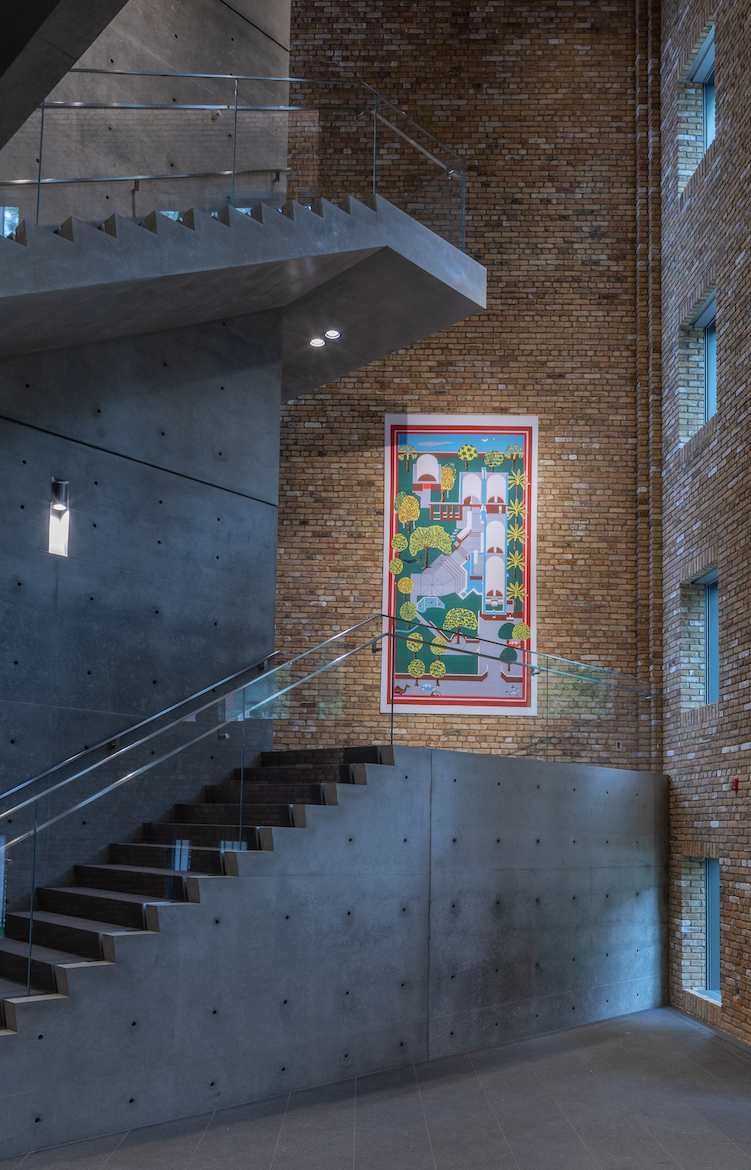
The exhibition (organized by the Vitra Design Museum, the Wustenrot Foundation, and the Vastushilpa Foundation) is curated by Khushnu Panthaki Hoof, Doshi’s granddaughter and longtime collaborator. It features projects from 1956 to 2014, and is organized by program and scale. Within Wrightwood 659 (designed by another Pritzker-winner, Tadao Ando), education projects are showcased in the second-floor gallery, cultural and urban-scale work on the third floor, and housing projects on the top floor. The exhibition begins strikingly, with one of Doshi’s paintings—of his 1980 Sangath architecture studio—hanging in Wrightwood 659’s grand atrium.
Doshi, now 93, began studying architecture in 1947, the same year India gained independence, and he saw his first projects as vessels for the new future of self-determination. Early institutional works demonstrate Doshi’s facility with Corbusian Brutalism, before he’d fully merged this style with Indian conceptions of program and climatic context. One such building is the 1967 Tagore Memorial Hall in Ahmedabad, where his practice is based and many of his projects are located. With its looming trapezoidal ceiling and bowl-shaped auditorium, the hall is a study in concrete heroics.
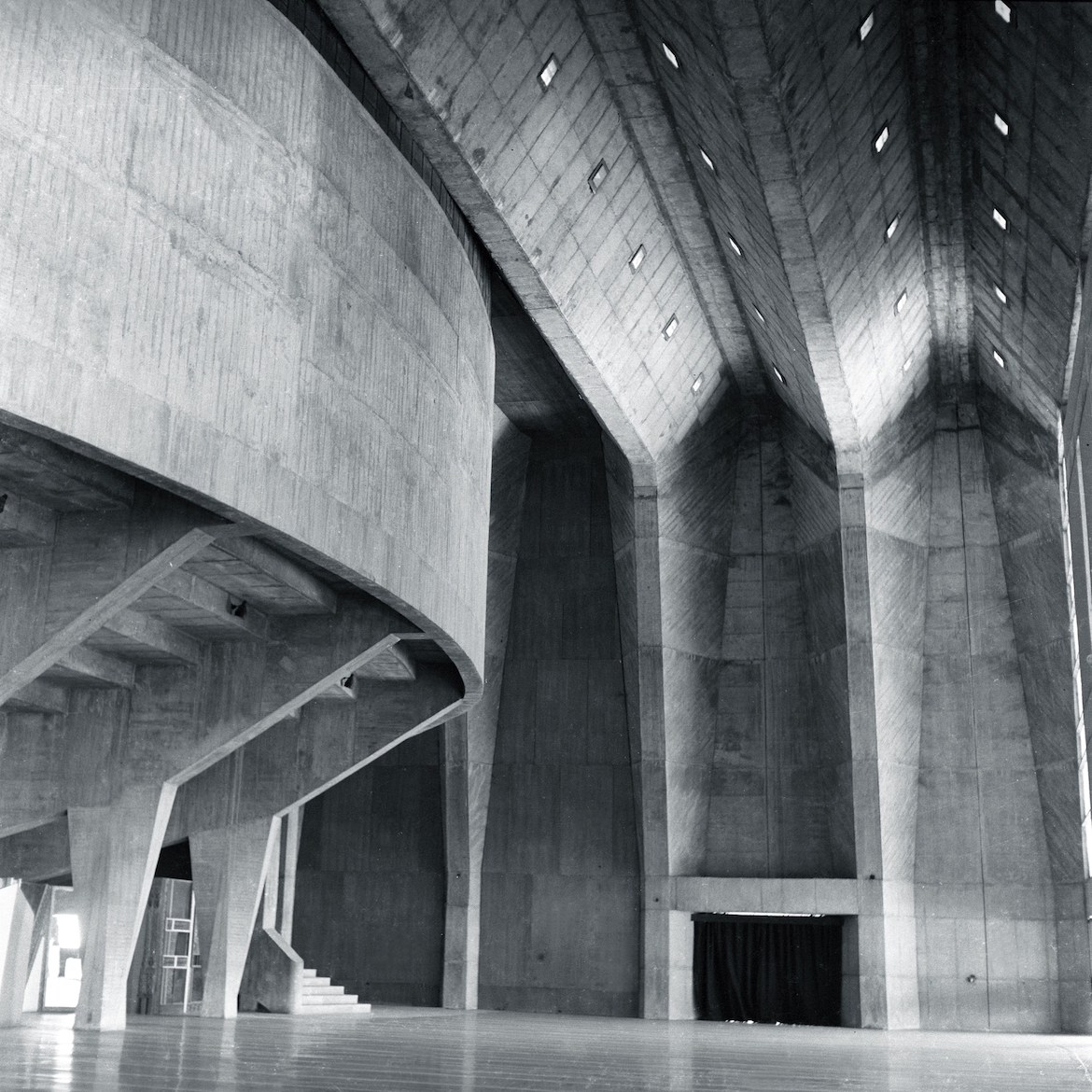
But other work reveals a more thorough integration of the vernacular. Instead of appropriating formal cultural features, Doshi draws insight from broader functional aspirations, with his projects embodying the complex layering of history and infrastructure observed in Indian cities. For instance, Sangath reflects this concept of urbanism—a village of vaulted roof bays arranged around courtyards and pools, taking a note from the informal settlements well entrenched in the country. One highlight of the exhibition is a reproduction of a Sangath vaulted bay, room-scaled but altered to shrink along its length, its forced perspective pulling visitors in.
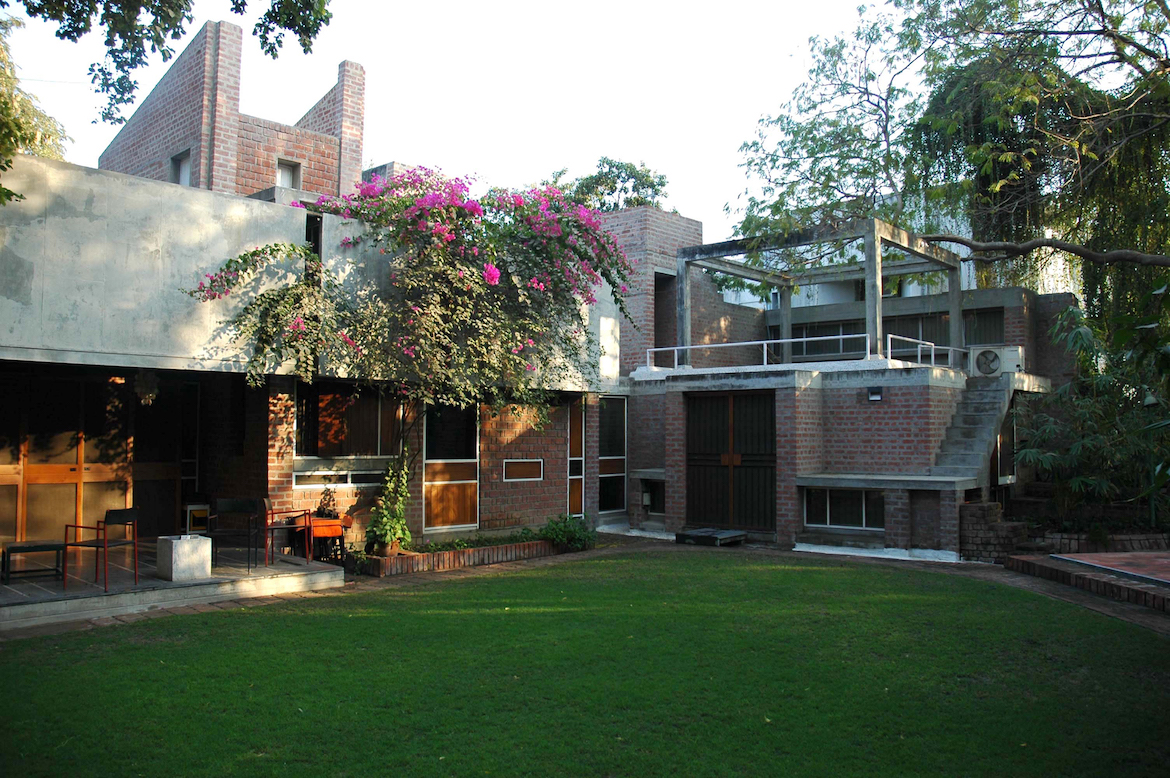
By the standards of his own work, it’s not an insult to say that Doshi’s personal Ahmedabad residence, Kamala House (1963), would fit into the informal settlements he has carefully studied. It offers the same freewheeling spatial logic and loose relationship to program. It’s also been photographed in a state that few architects would allow, its joints and seams imperfect. There are nicks on the walls, and a paper calendar pinned up with a sticky note. There’s a sense that this house is lived in and loved, in a way that’s rare for ultra-curated homes by and for designers. “That open-endedness, the incompleteness, that ambiguity is the essence of his work,” says Hoof.
Doshi defines architecture as a living organism, and Hoof explains that his work is less about static objects and more about facilitating “a growth pattern.” His 1973 housing for the Life Insurance Corporation of India in Ahmedabad exemplifies this philosophy, with its six-unit blocks in a loose pyramid. Lower-wage residents occupy the top of the blocks and have the ability to expand their homes across the larger floor plates below. The exhibition’s media screens document how families have adapted and expanded their homes over time, gradually blurring the complex’s orthogonal Modernism with terra-cotta shingles and decorative pediments.
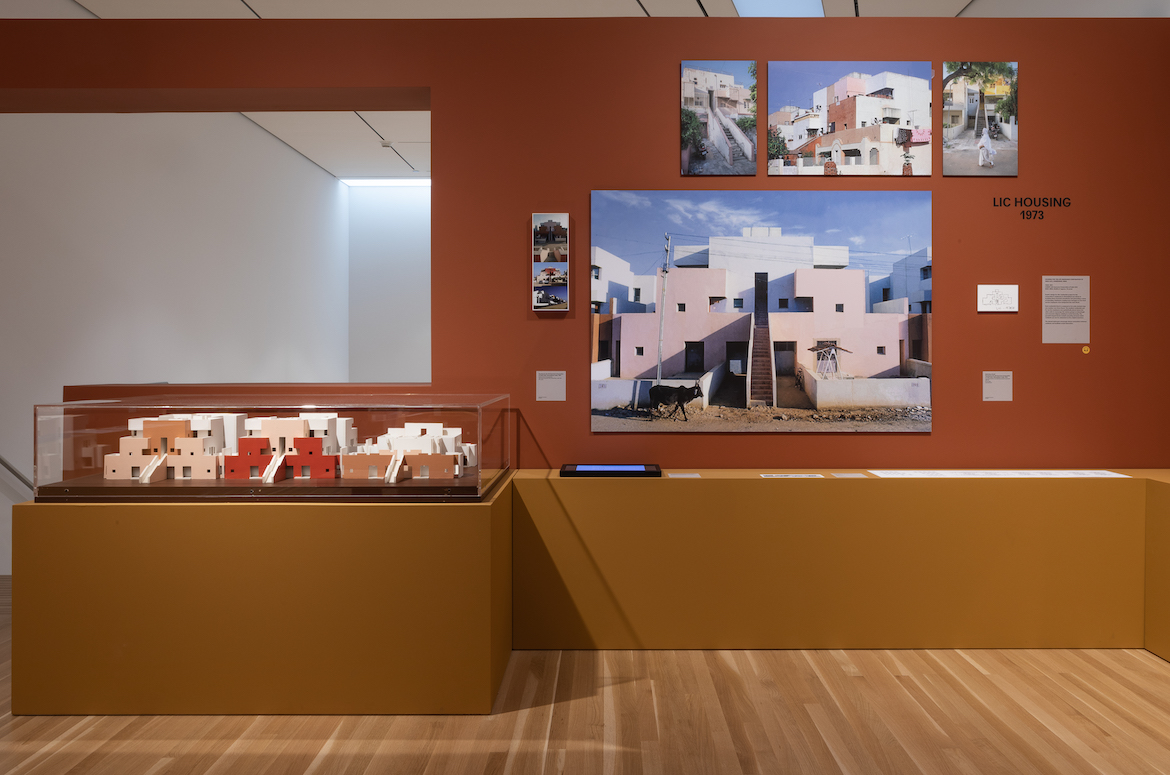
An undercurrent of mysticism is apparent in Doshi’s worldview, especially evident in his paintings. These provide brilliant counterpoints to the concrete and brick that predominate in his work: buildings are abstractly rendered in fields of neon, orange, and pink, and populated by errant peacocks and camels. This way of presenting architecture puts the natural world on equal footing with the anthropocentric one, hinting at a mysterious unity of form and purpose. These moments of convergence are some of the show’s most satisfying, and more focus on Doshi’s spiritual side would have enhanced an otherwise conventional exhibition.
Yet the show makes it clear that Doshi is chasing something as ineffable as the expression of what life is like in the world’s largest democracy. Despite its traditional format, the exhibition communicates an essential humility that comes with letting go of architectural control and allowing for change. The acknowledgment that architects are not actually gods might not sit well with all professionals, but the truth is, as Doshi knows, buildings, cities, and life are messy and complicated.
The exhibition Balkrishna Doshi: Architecture for the People runs through December 12 at Wrightwood 659 in Chicago. There are Covid restrictions, and reservations are essential.



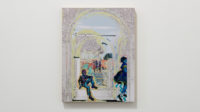
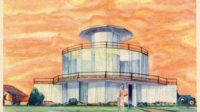
Post a comment to this article
Report Abusive Comment